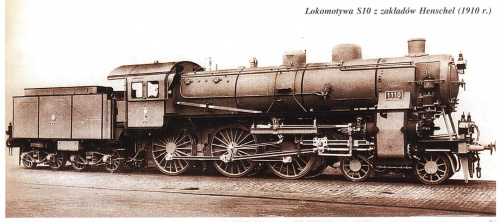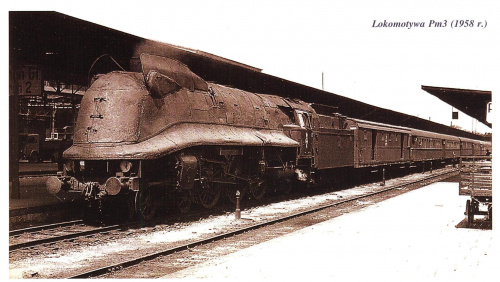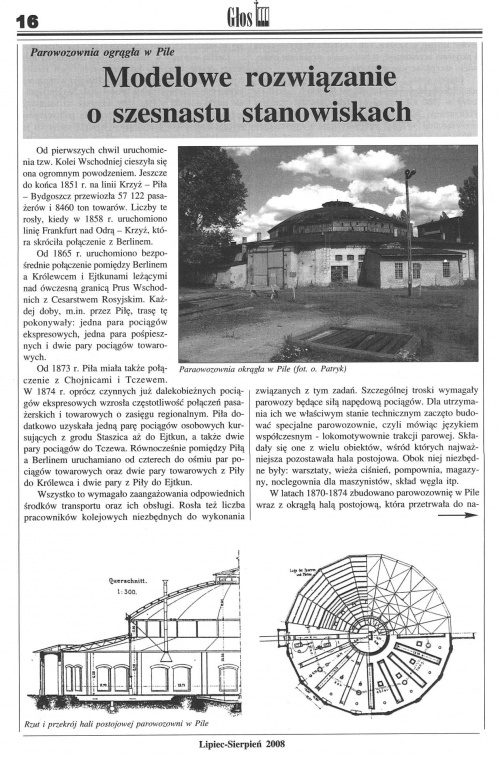|
Model
solution with sixteen positions.
The
roundhouse enjoyed great popularity from
the beginning of operation of so-called
Eastern Railway. Up to the end of 1851
on the route from Krzyż to Bydgoszcz
through Piła, it transported 57122
passengers and 8460 tons of goods. The
numbers increased when the route from
Frankfurt upon Oder to Krzyż was opened
in 1858 which shortened the
interconnection to Berlin.
Direct
interconnection from Berlin to Królewiec
and Ejtkuny on contemporary border of
Russian Empire with Eastern Prussia was
opened in 1865. The route was used
everyday inter alia Piła by: one pair of
express trains, one pair of expedite
trains, two pairs of freight trains.
Piła
had the interconnection with Chojnice
and Tczew in 1873. The frequency of
regional passenger transportation and
regional freight transportation
increased in 1874 besides already active
long-range express trains. Additionally,
Piła gained one pair of passenger trains
plying from the city of Staszic to
Ejtkuny and two pairs of trains to Tczew.
Meanwhile, from four to eight pairs of
freight trains operated between Piła and
Berlin and two pairs of freight trains
operated between Piła to Królewiec and
two pairs of freight trains operated
between Piła and Ejtkuny.
The
involvement of proper means of
transportation and service was needed.
The numbers of railways workers for
accomplishing these tasks increased as
well. The steam engine locomotives as
the propelling force of trains demanded
special care. The special roundhouses
were built in order to maintain them in
adequate technical condition; so to
speak, they were locomotive workshops of
steam traction. They consisted of many
objects and stopover halls were the most
important of these. The important
objects besides stopover hall were:
workshops, water-tower, pump station,
warehouses, engine-driver hostels, coal
depot etc.
During
1870-1874 period, the roundhouse in Piła
was built with round stopover hall,
which survived until present time. It
was situated easterly from railway
station building near tracks from Piła
to Bydgoszcz. The stopover was erected
in plan based approximately on circle
(hexagonal shape) with the diameter
amounting to 25, 41 meters. In section,
the hall consists of main part covered
with dome roof (31, 42 m of diameter)
and lateral nave surrounding it in the
whole perimeter (9, 70 meters of width).
The height of main hall in skylight axis
amounts to 16, 10 meters and average
height of lateral nave amounts to 6, 28
meters.
The
basic element of hall equipment is
rotating device serving as the
directional change of driving of steam
engine locomotive. The rotating device
in Piła is an example of basic model of
this type of device. It was made from
movable bridge with mechanical
propulsion which rotated around pole
where the bridge is suspended in
balance.
The
bridge is surrounded with track ring and
the edges of bridge are based on it –
two-wheeled trolleys. It ensures the
stability of bridge. The rotating device
is propelled by electric engine with the
help of cog wheel. The rotating device
has the possibility of moving with 360°
angle. Initially up to 20s of
XX-century, the diameter of the circle
amounted to 11 meters but it was 16
meters afterwards. Every sixteen
positions were supplied with auditing
canal (from 12, 70 meters to 13, 70
meters of length).
As it
was mentioned earlier, the roundhouse in
Piła is model solution of roundhouse
with sixteen positions which were built
in Eastern Prussian Railway in Berlin (Pankow)
and in Piła. However, our roundhouse was
model construction presented in many
railway manuals and railway
encyclopedias. It is solely preserved
roundhouse of this type in Poland and
Europe in original shape. Unfortunately,
it has not been used for many years and
its technical condition deteriorates.
The
efforts have been made lately to obtain
financial aid in order to secure the
covering of roundhouse and to elaborate
new utilization concept which takes into
consideration the preservation of its
unique historical technical-constructive
assets. In parallel, preparatory
procedure has been undertaken to provide
legal protection for this building. The
society of OKRAGLAK in Piła grouping the
fans of railway and its tradition helps
actively in that matter.





|